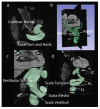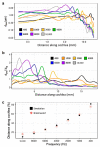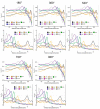Finite Element Modeling of Residual Hearing after Cochlear Implant Surgery in Chinchillas
- PMID: 37237608
- PMCID: PMC10215081
- DOI: 10.3390/bioengineering10050539
Finite Element Modeling of Residual Hearing after Cochlear Implant Surgery in Chinchillas
Abstract
Cochlear implant (CI) surgery is one of the most utilized treatments for severe hearing loss. However, the effects of a successful scala tympani insertion on the mechanics of hearing are not yet fully understood. This paper presents a finite element (FE) model of the chinchilla inner ear for studying the interrelationship between the mechanical function and the insertion angle of a CI electrode. This FE model includes a three-chambered cochlea and full vestibular system, accomplished using µ-MRI and µ-CT scanning technologies. This model's first application found minimal loss of residual hearing due to insertion angle after CI surgery, and this indicates that it is a reliable and helpful tool for future applications in CI design, surgical planning, and stimuli setup.
Keywords: chinchilla; cochlear implant; finite element; inner ear; insertion angle.
Conflict of interest statement
The authors declare no conflict of interest. The terms of this arrangement are being managed in accordance with University of Oklahoma policies on conflict of interest.
Figures








References
-
- World Health Organization Deafness and Hearing Loss. [(accessed on 1 January 2022)]. Available online: https://www.who.int/news-room/fact-sheets/detail/deafness-and-hearing-loss.

